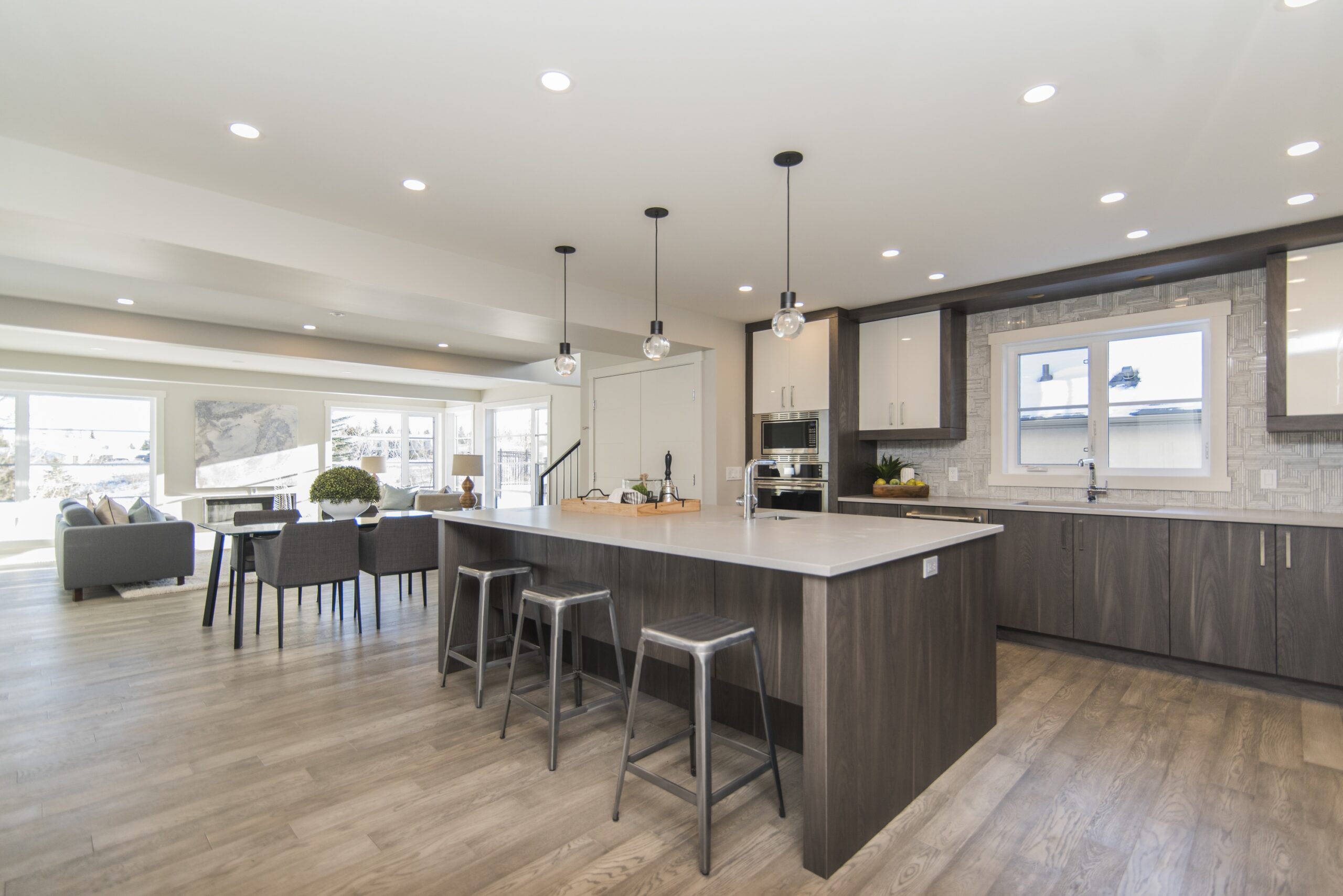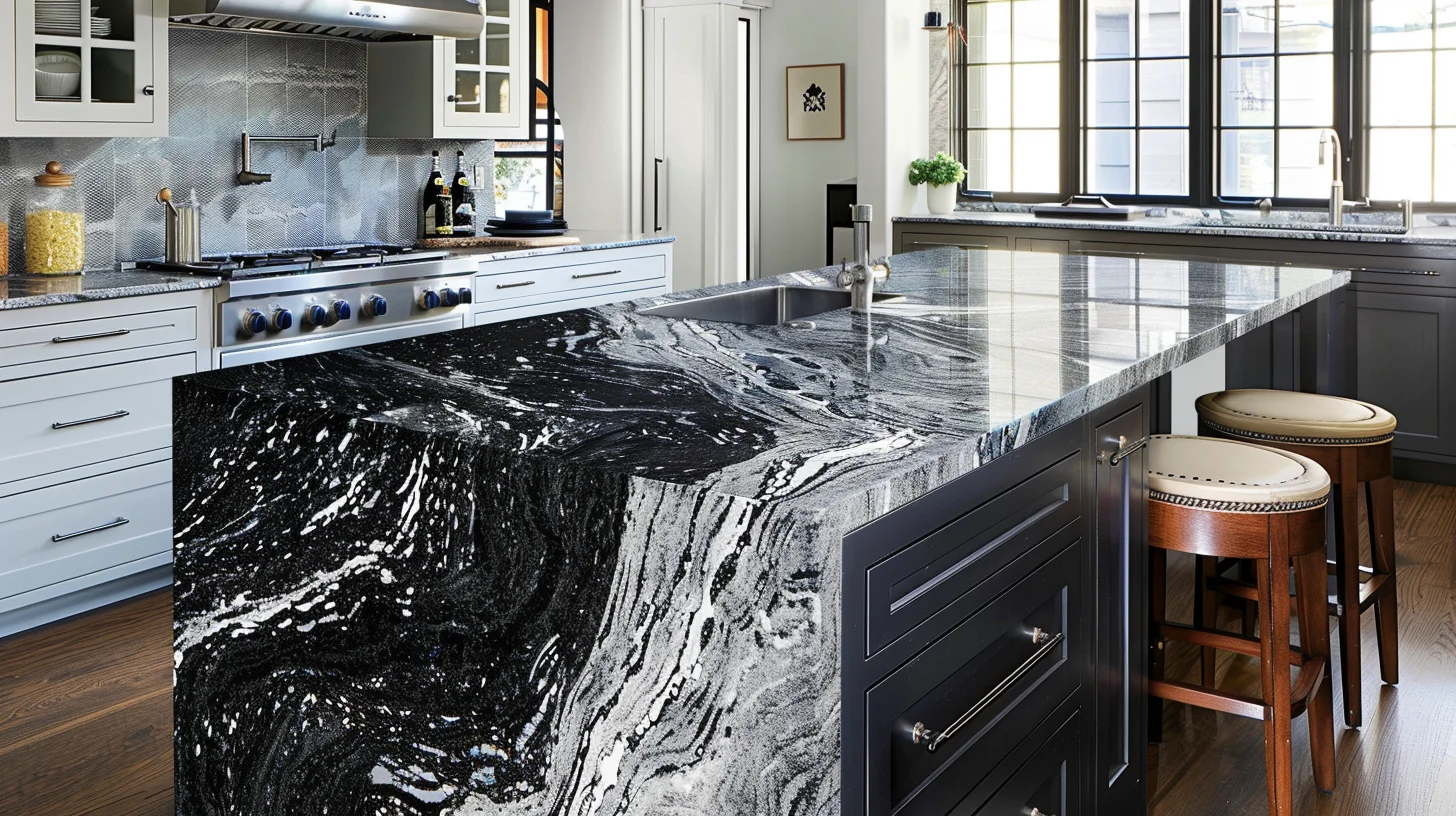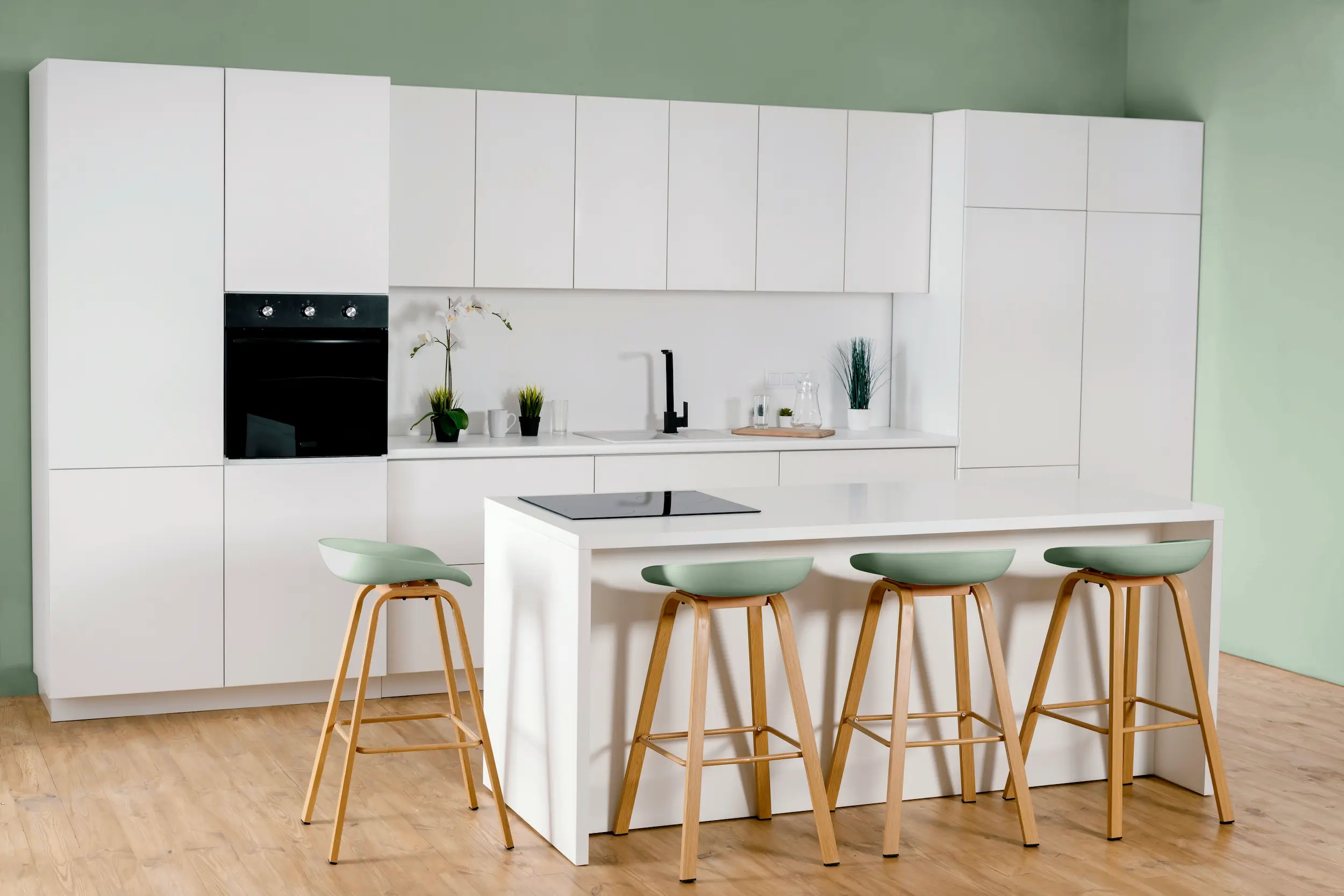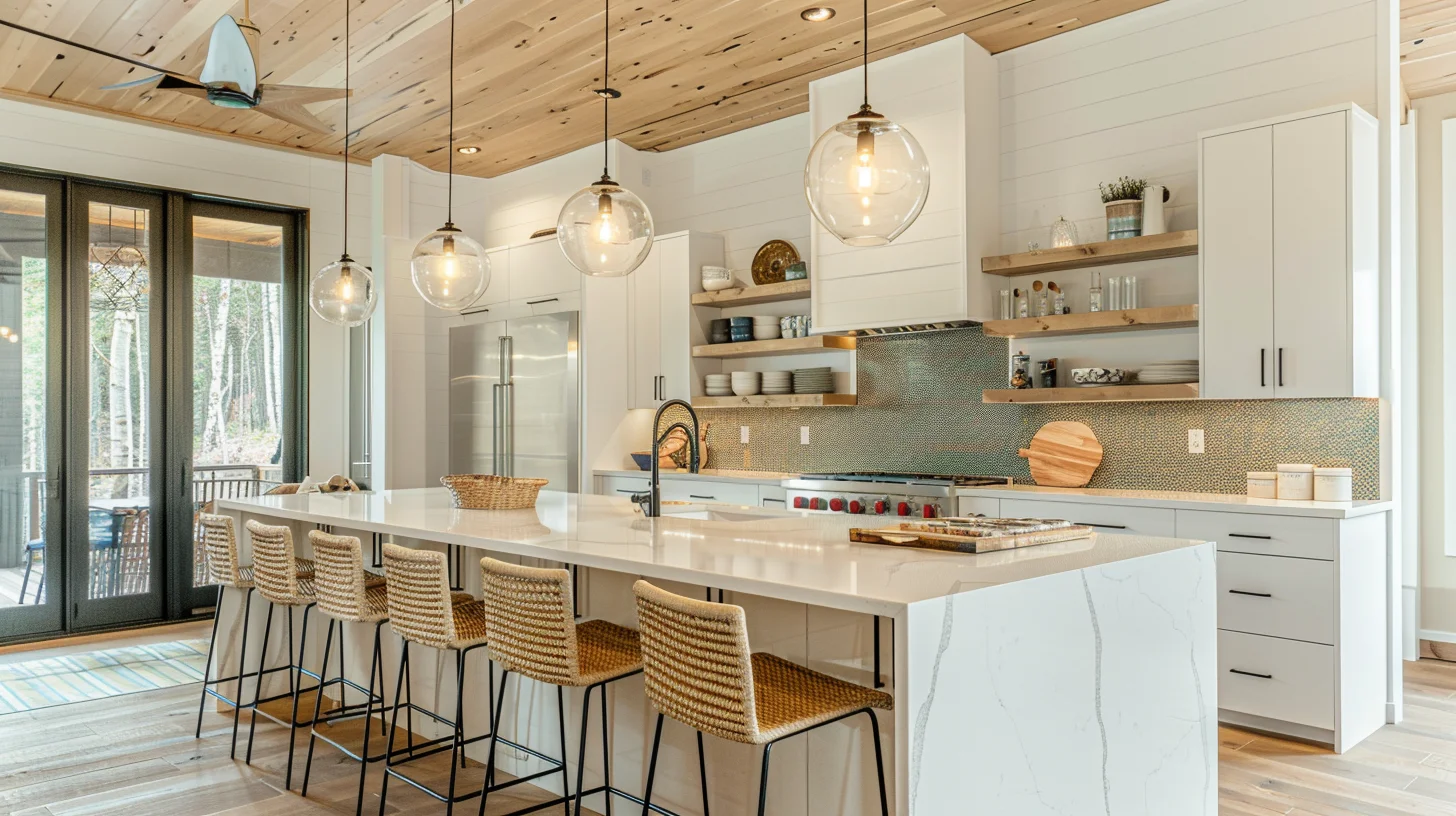Waterfall Kitchen Island Vs. Standard Kitchen Island: A Comprehensive Guide
A kitchen island is a versatile and functional addition to any kitchen. It can provide extra counter space, storage, and seating. There are two main types of kitchen islands: waterfall and standard. In this blog post, we will discuss the pros and cons of each type of island, helping you decide which one is right for your kitchen.

What is a Kitchen Island?
A kitchen island is a freestanding piece of furniture, typically located in the center of the kitchen, used for various purposes such as food preparation, cooking, dining, and entertaining. They come in a range of sizes, materials, and designs, making them customizable to suit different kitchen layouts and preferences.
What Are The Benefits of a Kitchen Island?
Having a kitchen island can dramatically transform your kitchen. Here are some key benefits:
- Increased Counter Space: Islands provide additional workspace for meal prep, serving, and cooking.
- Additional Storage: With cabinets, drawers, or shelves, a kitchen island can increase storage capacity for kitchen essentials.
- Seating Options: Many kitchen islands come equipped with bar stools or counter stools, providing an informal place for meals, conversation, or homework.
- Improved Workflow: A well-placed island can enhance kitchen efficiency by centralizing workspace, appliances, and storage.
- Enhanced Home Value: A stylish kitchen island, especially a waterfall island, can increase the value of your home, making it a worthwhile investment.

What Are Waterfall Islands?
A waterfall island features a countertop that flows over the sides of the island, creating a seamless “waterfall” effect. This design usually incorporates high-end materials such as granite, marble, or quartz, making it both functional and visually stunning.
Pros of Waterfall Islands
- Stunning Appearance: The sleek, continuous design of a waterfall island is a striking focal point in any kitchen.
- Increased Counter Space: As with any island, a waterfall design offers extra workspace.
- Durable Materials: Waterfall islands are often made with durable materials like granite or quartz, making them resistant to scratches and heat.
- Easy to Clean: Smooth surfaces make cleaning simple, with minimal seams where crumbs or spills could gather.
Cons of Waterfall Islands
- Higher Cost: The natural stone materials and specialized installation process make waterfall islands more expensive than standard options.
- Heavy Weight: The stone materials used are quite heavy, often requiring professional installation to ensure structural support.
- Prone to Cracking: If not installed correctly, natural stone can crack, especially in high-traffic areas or due to improper handling.

What Are Standard Kitchen Islands?
A standard kitchen island is a more traditional option, without the cascading countertop feature. They come in various materials, such as wood, laminate, or stainless steel, and offer a more customizable and budget-friendly option.
Pros of Standard Kitchen Islands
- More Affordable: Standard islands are usually more budget-friendly than waterfall islands, especially when made from materials like wood or laminate.
- Lighter Weight: These islands tend to be lighter, which makes installation easier and more flexible.
- Versatility: Standard kitchen islands come in a variety of styles and materials, making them more adaptable to different kitchen designs.
Cons of Standard Kitchen Islands
- Less Aesthetic Appeal: Standard islands, particularly those made from wood or laminate, don’t have the dramatic visual impact that a waterfall island provides.
- Less Durable: Compared to natural stone, materials like wood or laminate are less resistant to wear and tear, scratches, and heat.
- Harder to Clean: Surfaces like wood or laminate can be more challenging to keep clean compared to the seamless, stone surfaces of a waterfall island.

Waterfall Island Vs. Standard Island: Which Is Right for You?
Ultimately, the decision between a waterfall kitchen island and a standard kitchen island comes down to personal preference, budget, and kitchen style.
- If you prioritize aesthetics and are looking for a statement piece, a waterfall island offers a modern, sleek, and high-end look.
- On the other hand, if you’re seeking versatility, practicality, and a budget-conscious option, a standard island might be the better choice.
Consider how you use your kitchen, the materials that suit your lifestyle, and the overall style of your home when making your decision.
FAQs
Does a Waterfall Island Add Value?
Yes, a waterfall island can add value to your home. Potential buyers will be attracted to the unique and stylish appearance of a waterfall island.
Is a Waterfall Countertop and Island Outdated?
No, waterfall countertops and islands are not outdated. In fact, they are becoming more popular than ever. Waterfall islands are a timeless design that will complement any kitchen style.
How Much Does a Waterfall Kitchen Island Cost?
Waterfall kitchen islands can vary significantly in cost depending on the material used. Expect to pay between $3,000 and $6,000 for high-end materials like quartz or marble, which includes installation. Standard islands, by comparison, can range from $1,000 to $3,000.
Can You Install a Waterfall Island in a Small Kitchen?
Yes, a waterfall island can be installed in a small kitchen, but space needs to be considered carefully. Because of its bold visual impact, a waterfall island is best suited for open layouts, though smaller versions can still create a luxurious feel in tighter spaces.
What Maintenance Does a Waterfall Island Require?
Waterfall islands, especially those made from natural stone, require regular maintenance such as sealing the stone to prevent stains and cracks. Routine cleaning with a mild soap and water solution is typically all that’s needed to keep it looking pristine.
Is a Standard Kitchen Island a Good Investment?
Yes, a standard kitchen island can still add value to your home, particularly when it is well-designed and fits the overall style of your kitchen. While it may not have the dramatic impact of a waterfall island, a standard island is practical and provides many functional benefits.
Can I Convert a Standard Island to a Waterfall Island?
Yes, with the help of a professional, it is possible to convert a standard island to a waterfall island by replacing the existing countertop with a new one that extends down the sides. This may involve reinforcing the island structure to support the added weight of the stone.
Conclusion
Choosing between a waterfall kitchen island and a standard kitchen island involves weighing the pros and cons of style, budget, and functionality. Waterfall islands make a bold design statement and offer durability, but come with higher costs. Standard kitchen islands provide a more flexible, affordable option with plenty of practical benefits. Whichever you choose, both types of islands can enhance the look and function of your kitchen.
Company
Get Updates About Campaigns
© 2025 Progress Kitchen and Bath.

